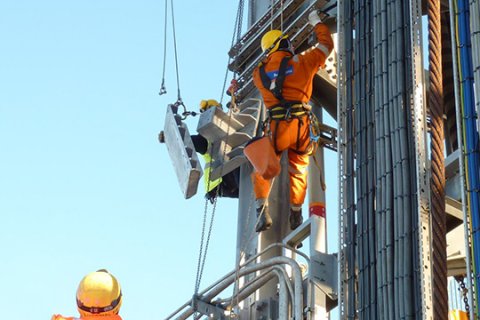A foot injury can be debilitating, resulting in work hours or work difficulties. Wearing safety shoes or boots can prevent multiple foot injuries in the following ways.
1. To prevent falling and flying objects
When a worker carries heavy materials or works in a dynamic environment, falling and flying objects are common hazards when many people, machines and vehicles are operating at the same time. Protective shoes like steel toe boots can effectively prevent foot injuries.

2. Prevent puncture
When the worker can step on a sharp object or be hit by a sharp object from above, heavy-duty shoes and thick-material shoes on the feet provide the best protection. For example, at the construction site, many sharp objects may be on someone’s road. Soft-soled shoes may not provide enough protection.
3. Prevent the danger of cutting off
Sharp machines or machines containing moving parts can create cutting hazards. For example, workers in the logging industry are at risk of electric saws. If the saw is in contact with someone’s foot, the result can be catastrophic. OSHA requires logging boots made of cut-resistant material to protect workers who use chainsaws, according to standard 29 CFR 1910.266(d)(1)(v). These boots are also waterproof or waterproof and support the ankle.
4. Prevent electrical hazards
Electricity poses various risks in the workplace. Workers may face potential shocks or build up static electricity, which may cause sparks in some environments.
In order to reduce the possibility of electric accidents, non-conductive shoes made of leather, rubber or other non-conductive materials can be worn. Static electricity or conductive shoes can be used where static electricity builds up on the body and poses a danger. These options reduce the amount of static electricity that accumulates on the body and prevent static sparks.

5. Prevention of SLIPS, TRIPS and FALLS
Safety shoes, footwear, foot protection. Slips, trips and falls can occur at any workplace and cause many accidents each year. Enterprises can take measures such as implementing housekeeping measures and installing non-slip flooring tapes to reduce the risk of these accidents. Appropriate shoes can also provide extra protection against slipping, tripping and falling.
Shoes with proper traction can help prevent falling on the same level in a smooth environment. They can also prevent the ladder from falling, which is common when people do not wear the right shoes.
Comfortable and comfortable shoes can also improve balance, which will help prevent slipping, tripping and falling.
6. Prevent fatigue
Fatigue may be a real problem for staff standing all day, especially on hard surfaces such as concrete surfaces. The muscles on your feet and your legs, back and other parts of your body will become tired. When employees do not wear proper shoes, the situation will become worse. Shoes that provide enough cushioning and arch support can make people more comfortable and reduce muscle strain. This means that staff fatigue will slow down. Tired employees will be more vigilant, so they may be safer and work more efficiently.
Preventing muscle strains also helps prevent musculoskeletal disorders such as chronic low back pain.
7. Prevent burns
Burns may occur in the workplace, but chemicals and even common workplace materials (such as cement) can also burn. Shoes made of durable materials prevent chemical splashes, splashes of molten metal, and other burns from hazardous materials that can harm the skin on your feet.

8. Protect extreme weather
We all know that cold weather can cause injuries, such as frost and hypothermia, which should not be overlooked in the workplace. People who go out for work in the winter and employees working in wet or cold environments are at risk.
In addition, colds may exacerbate some of the lesser-known work-related accidents. For example, Raynaud’s syndrome is a disease in which fingers can turn white from bad blood flow. When employees are exposed to low temperatures, this situation is related to the use of power tools to generate vibrations. In some cases, this disease can also affect your feet, so it is important to keep your feet warm and comfortable and other measures to keep your body warm.
Not all safety shoes are waterproof or insulated to provide protection against cold, rain and snow, so be sure to choose footwear options made from the right materials.


